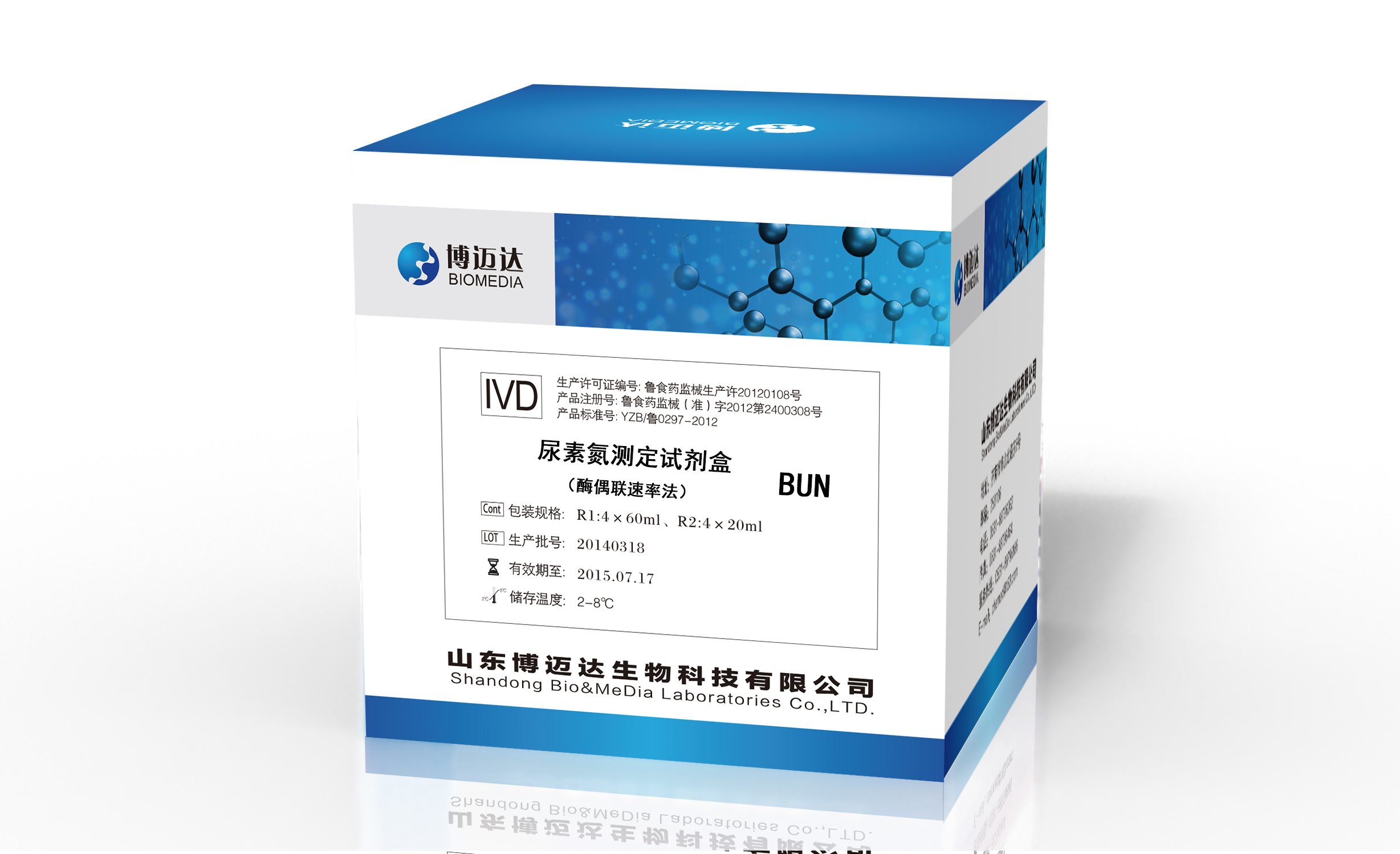
Test principle

In the coupling reaction above, urea is hydrolyzed in the presence of urease, producing NH3 and CO2. And then NH3 reacts with α-KG, generating glutamic acid. In the meanwhile, NADH is oxidized and converted into NAD+.
The concentration of BUN can be calculated from the decreasing rate of absorbance detected at a wavelength of 340 nm.
Product Features
1. Linear range of BUN activity: [0.3, 33.7] mmol/L
Linear correlation coefficient ∣r∣≥ 0.990
Linear deviation ≤ ± 10.00%
2. Absorbance of blank ≥ 0.90
3. Changing rate of absorbance of blank ΔA/min ≤ 0.02
4. Sensitivity
Changing rate of absorbance of blank ΔmA/min ≥ 0.50 while testing the specific BUN sample of concentration of 16.7 mmol/L.
5. Accuracy
Relative deviation is within ±10%.
6. Precision
Intra CV% ≤ 5.0%; inter CV% ≤ 5.0%.
Technical Parameters
|
Temperature |
37℃ |
Optical path length (OPL) |
1.0 cm |
|
Main wavelength |
340 nm |
Secondary wavelength |
450 nm (Optional) |
|
Method |
Velocity method |
Reaction direction |
Negative |
|
Sample |
10 μL |
R1 |
200 μL |
|
R2 |
50 μL |
Delay time |
50 s |
|
Reaction time |
180 s |
|
|
Reference range of ALT activity: 3.0 – 6.4 mmol/L.
Packing Specifications
R1: 1×40 ml, R2: 1×10 ml
R1: 2×40 ml, R2: 1×20 ml
R1: 2×60 ml, R2: 2×15 ml
R1: 2×80 ml, R2: 2×20 ml
R1: 4×60 ml, R2: 4×15 ml
R1: 3×80 ml, R2: 3×20 ml
Storage and stability
Unopened: Store test kits at 2 - 8℃ protected from light. Stable to expiration date printed on individual vials (for 15 months).
Opened: Store test kits at 2 - 8℃ protected from light. Stable for 1 month if kept capped from original container and free from contamination.
Do not freeze the test kit.